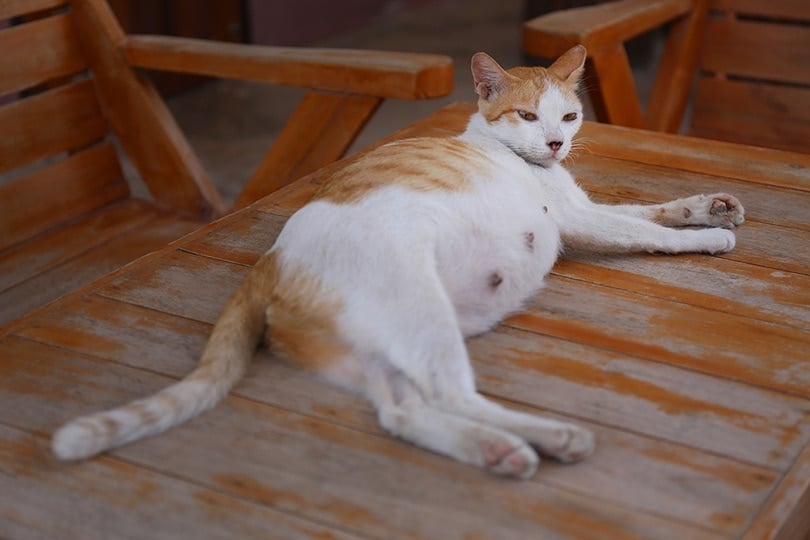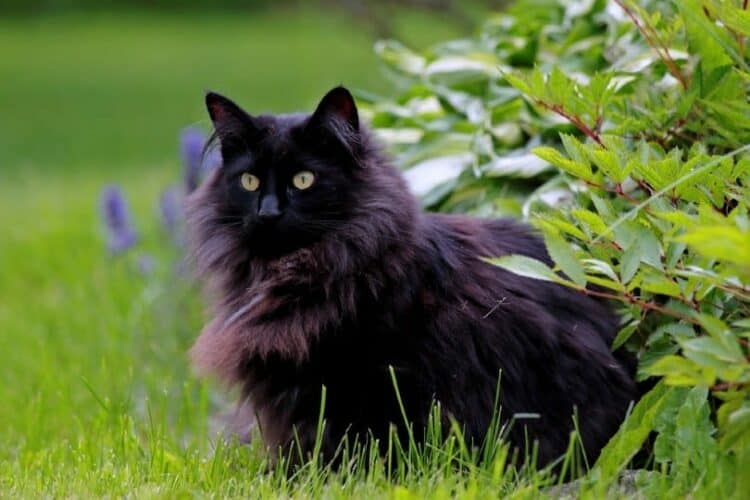If you’ve just spent a night wide awake because your female cat was persistently yowling and rubbing against you, they may have been in heat. Going into heat—also known as the estrus cycle—is a normal part of the reproductive process in cats and usually starts at around 6 months of age. On average, a female cat is in heat for 7 days, but this can vary.
In this post, we endeavor to answer all your burning questions about the feline heat cycle and share the telltale signs and behaviors to watch out for.
Feline Heat Cycle: The Stages
Female cats typically go into heat every 3 weeks between spring and fall and can become pregnant from 4 months old. There are five stages to the heat cycle in female cats. They are:
Proestrus
This phase lasts 1 or 2 days and there are no “in your face” signs that anything is different, as a rule. The queen (female cat) becomes attractive to male cats at this stage, but the queen doesn’t show interest in mating.
Estrus
This is the stage in which queens go into heat. They will show interest in mating during this time and the behavioral changes can be surprising to first-time cat parents—they often vocalize with a series of prolonged yowls and become unusually affectionate. Though the average length of this phase is 7 days, it can last anywhere between 2 and 19 days.
Interestrus
If a queen doesn’t get pregnant as a result of the estrus phase, she goes into the interestrus phase—the phase between estrus cycles. This lasts for between 2 and 3 weeks.
Diestrus
If the queen does become pregnant, she enters the diestrus stage. In cats, pregnancy tends to last between 63 and 65 days.
Anestrus
The anestrus stage describes the dormant period between estrus cycles. It occurs as the result of daylight hours changes and lasts for around 2–3 months. If your cat is an indoor cat, the cycle may continue year-round due to consistent light exposure.

How To Spot a Cat in Heat
Due to hormonal changes, a cat in heat goes through a series of behavioral changes. These include:
- Becoming unusually affectionate: Even for typically affectionate cats, in heat, they can become even more clingy and tactile than usual. One way they display this behavior is by constantly rubbing against you or inanimate objects in the vicinity.
- Vocalizing: Cats in heat often vocalize loudly in a series of yowls and wails.
- Showing you their butt: If your cat is in heat, you may experience the “joy” of having them obsessively display their rear end. This is a signal to male cats that she is ready to mate.
- Trying to escape: You may spot your female cat sitting close to windows and doors, at which they will sometimes scratch in an attempt to escape.
How to Stop a Cat from Going Into Heat
Getting your cat spayed is the only way to stop them from going into heat. This procedure involves the surgical removal of the uterus and ovaries to prevent female cats from becoming pregnant. There are a host of benefits to spaying, including:
- The avoidance of unwanted pregnancies
- Prevention of uterine and ovarian cancers
- Prevention of breast tumors
Have a chat with your vet to figure out the best time for your cat to be spayed, as this can vary.
Final Thoughts
So, to recap—a female cat’s heat cycle usually lasts for around 7 days, but it can be as short as 2 days or as long as 19 days. Spaying is the best way to abate the negative aspects of the heat cycle and eliminate the risk of certain serious health conditions.
Featured Image Credit: Elisa Putti, Shutterstock














